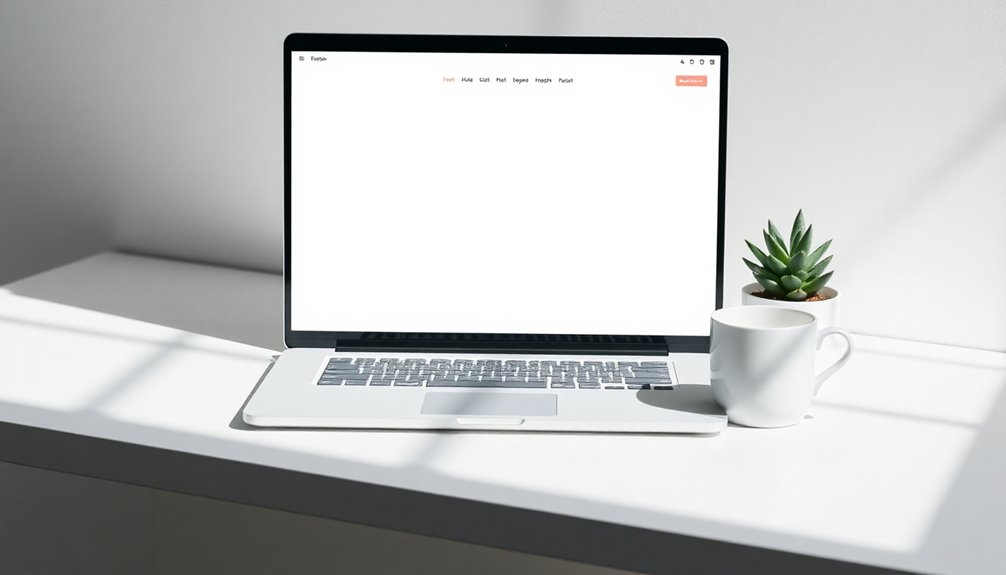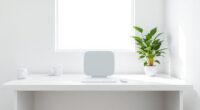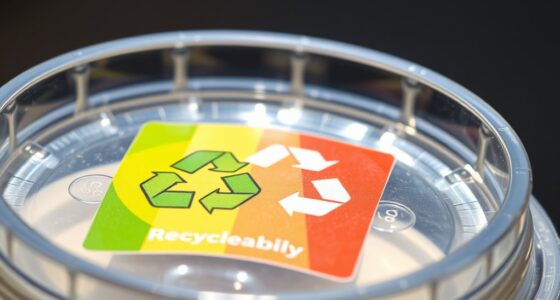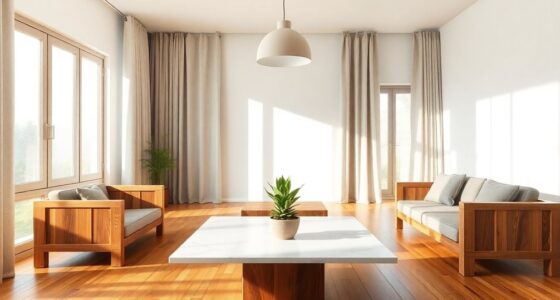In 2024, minimalist web design has evolved considerably, blending bold typography with vibrant colors against clean backdrops. You'll notice ample white space and simplified navigation enhancing user experiences. Micro-interactions and subtle animations add engaging touches. Dark mode options are prevalent, catering to user comfort. Plus, AI integration is personalizing experiences without clutter. Sustainability plays a key role too, with eco-conscious practices becoming standard. Stick around to discover more trends and successful examples that redefine minimalism.
Key Takeaways
- Bold typography and vibrant color accents against clean backgrounds became prominent, enhancing visual hierarchy and user engagement in minimalist design.
- Increased focus on sustainability led to the adoption of energy-efficient hosting and optimized images for faster load times.
- Micro-interactions and subtle animations improved user experience by providing intuitive navigation and engaging visual cues.
- The popularity of dark mode surged, with many minimalist websites offering light/dark mode switching for enhanced comfort and reduced glare.
- AI integration allowed for personalized content recommendations and dynamic layout adjustments, reinforcing minimalist principles while improving overall usability.
The Evolution of Minimalism in 2024
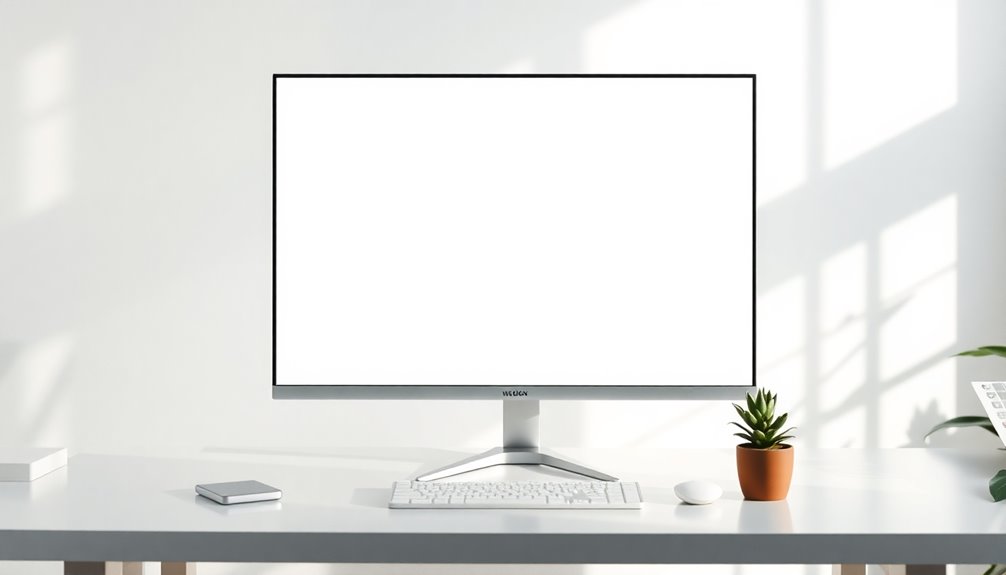
As minimalist web design continues to evolve in 2024, you'll notice how it's embracing bold typography and vibrant color pops that create striking contrasts against a clean backdrop.
This fresh take enhances visual interest while maintaining ample white space, making your content more readable and focused. Designers now integrate subtle animations to provide engaging feedback, enriching user experience without overwhelming simplicity.
Dark mode options have gained traction, offering comfort during low-light use and allowing you to control your visual environment.
Additionally, the push for sustainability is evident, with a focus on energy-efficient hosting and optimized images that support eco-friendly practices. Incorporating eco-friendly options not only enhances the aesthetic appeal but also aligns with the growing demand for responsible design.
Together, these elements redefine minimalist web design, making it not just aesthetically pleasing but also more user-centric and responsible.
Key Elements of Modern Minimalist Design
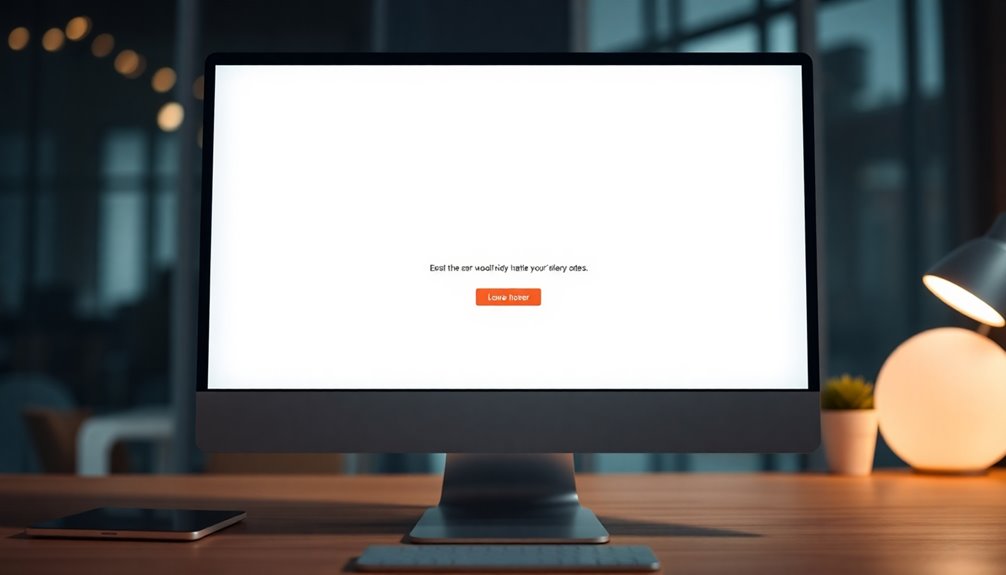
Modern minimalist design hinges on a few key elements that elevate user experience while maintaining simplicity.
Ample white space creates an open feel, enhancing readability and guiding your attention effectively.
Bold typography plays an important role, using large, easy-to-read fonts that make impactful statements and improve visual hierarchy.
You'll often find simplified color schemes, featuring monochromatic palettes or two to three complementary colors, promoting cohesion and visual comfort.
Clean navigation structures are essential, reducing overwhelm by streamlining menus and limiting items for a more intuitive browsing experience.
Finally, functional graphics, like icons and simple illustrations, support content without adding unnecessary clutter.
Together, these elements create an inviting and efficient online environment that users appreciate. Additionally, the growing emphasis on sustainable fashion reflects a broader trend towards mindful consumption that can also influence design aesthetics.
The Role of Color in Minimalist Aesthetics
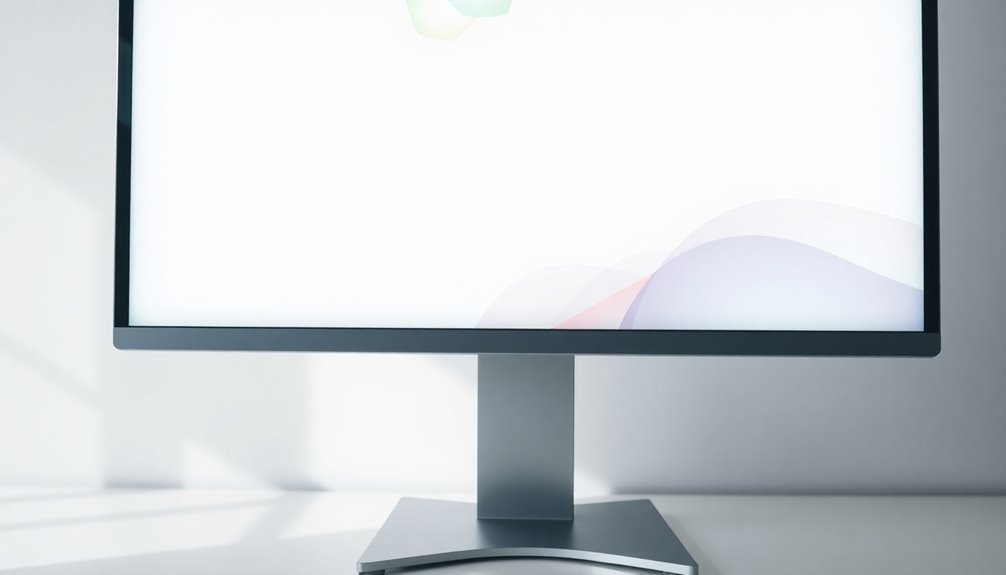
In minimalist web design, color plays an essential role in creating visual interest.
You'll often see bold color accents against a monochrome palette, which not only highlights key elements but also keeps the overall look clean and focused.
This balance enhances user experience by guiding attention where it's needed most without overwhelming the senses. Additionally, incorporating a color palette that aligns with the overall theme can further strengthen the design's impact.
Bold Color Accents
While a minimalist web design often embraces simplicity, bold color accents can transform an otherwise understated layout into a mesmerizing visual experience. By strategically incorporating bold colors within a limited color palette, you can create striking contrasts that draw attention to key elements.
This approach not only enhances user experience but also makes your modern website memorable. Designers are increasingly favoring monochromatic schemes, punctuated by one or two bold accent colors, to maintain cohesion while elevating visual interest.
Furthermore, these color choices play a crucial role in reinforcing brand identity, evoking specific emotions that resonate with your audience. Research indicates that effective use of color can boost brand recognition by up to 80%, making your color strategy essential in minimalist designs. Additionally, the principles of greatest happiness can guide your color choices to ensure they resonate positively with your audience.
Monochrome Palette Usage
Three key advantages of using a monochrome palette in minimalist web design stand out: enhanced focus, emotional resonance, and improved readability.
By opting for a limited color scheme, you can create a clean aesthetic that resonates with your brand while eliminating visual clutter.
Here are three benefits of monochrome palettes:
- Enhanced Focus: Your audience can concentrate on the content without distractions.
- Emotional Resonance: Different shades can evoke specific feelings, strengthening your message.
- Improved Readability: A well-structured layout with ample white space makes information easier to digest.
As we move into 2024, combining bold typography with monochromatic schemes boosts user engagement, creating visually appealing designs that prioritize functionality. Additionally, dairy-free butter options can be integrated into your site's content strategy to appeal to health-conscious visitors.
Embrace this trend for a more effective minimalist approach!
Enhancing User Experience With Micro-Interactions
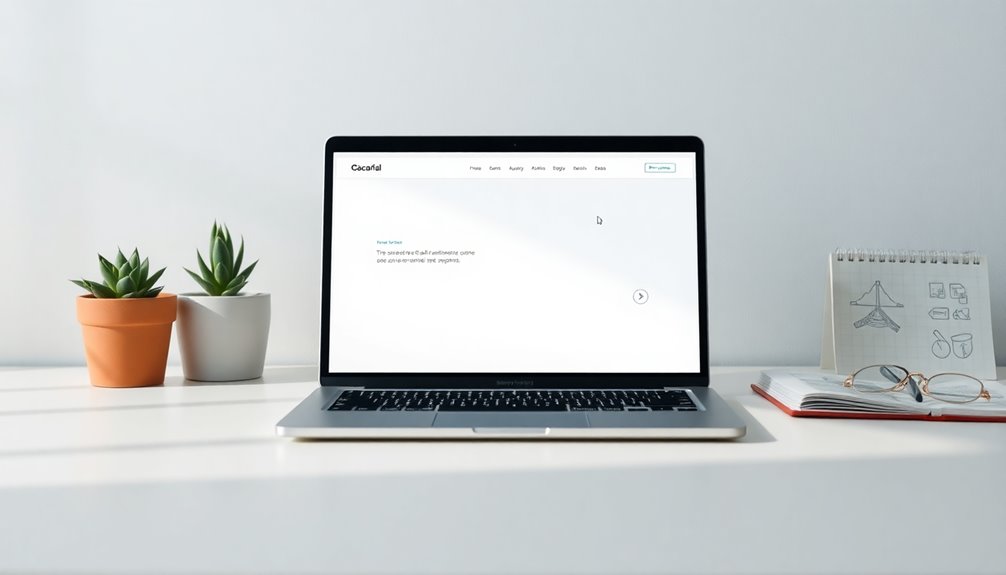
Micro-interactions can transform your minimalist website by providing engaging visual cues that guide users effortlessly.
When buttons change color or subtle animations occur, you create intuitive navigation enhancements that make every click more satisfying.
These small touches not only improve usability but also add a layer of delight to the overall experience. Additionally, the incorporation of on-device AI capabilities can further enhance user interactions by personalizing feedback based on user behavior.
Engaging Visual Cues
Subtle enhancements in web design can make a significant difference in user experience, and engaging visual cues are at the forefront of this transformation.
By integrating micro-interactions, you can create a minimalist design that feels alive and responsive. Here are three key benefits:
- Intuitive Feedback: Animations like buttons changing color on hover provide clear navigation cues, guiding users effortlessly.
- Enhanced Engagement: These engaging visual cues elevate the user experience, making interactions more satisfying and enjoyable.
- Improved Retention: Research shows that effective micro-interactions can lead to a 30% increase in user retention, reinforcing a clear content hierarchy. Additionally, incorporating user-friendly design elements can further enhance the overall experience.
Intuitive Navigation Enhancements
How can intuitive navigation enhancements transform your web experience? By integrating micro-interactions, like buttons changing color on hover, you create a more engaging environment that boosts user engagement.
These small yet effective design elements help reduce cognitive load, allowing you to navigate seamlessly while feeling in control. When you encounter intuitive navigation, it feels clean and simple, aligning perfectly with minimalist principles.
This fosters a sense of empowerment, making it easier to complete actions without feeling overwhelmed. Studies show that well-executed micro-interactions can increase user satisfaction and retention by up to 30%.
Embracing these enhancements not only elevates usability but also enriches your overall interaction with the website, making each click more satisfying. Additionally, leveraging AI-driven analysis can provide insights into user behavior, further optimizing navigation strategies.
Subtle Animation Effects
Animation effects play an essential role in enhancing user experience on minimalist websites. Subtle animation effects, or micro-interactions, provide visual cues that engage users effectively.
Here's how they can boost your site:
- Immediate Feedback: Buttons that change color or size on hover give users instant confirmation of their actions.
- Enhanced Navigation: Micro-interactions guide users through tasks, making navigation intuitive and reducing cognitive load.
- Increased Engagement: Studies show 70% of users find animated elements more enjoyable, keeping them interested without overwhelming them.
Incorporating these subtle animations into your minimalist web designs not only adds sophistication but also meets rising user expectations for interactivity, ultimately enhancing user experience and engagement. Additionally, understanding software development life cycle (SDLC) is crucial for effectively implementing these animations in a seamless manner.
The Impact of Dark Mode on Minimalist Websites
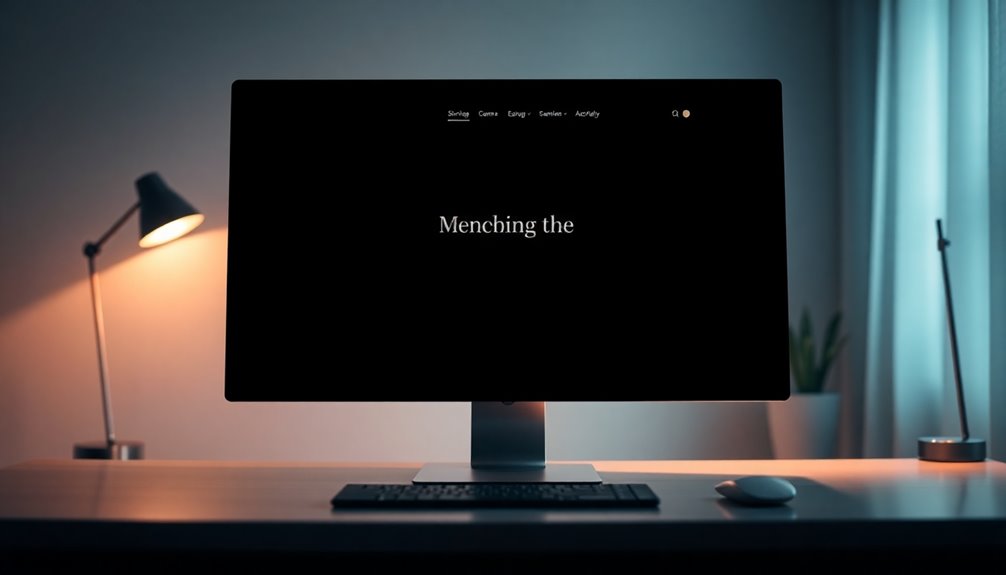
Dark mode has transformed the way minimalist websites engage users, offering a sleek aesthetic that enhances both functionality and comfort.
By reducing eye strain, especially in low-light environments, dark mode makes your browsing experience more user-friendly and appealing. It enhances visual contrasts, allowing bold typography and essential content to pop against darker backgrounds.
Many minimalist websites now provide seamless light and dark mode switching, empowering you to choose your preferred viewing experience while maintaining a clean layout. This modern aesthetic aligns perfectly with minimalist design principles, emphasizing user experience without overwhelming you with clutter.
Studies show that 80% of users prefer dark mode for its comfort and reduced glare, prompting more websites to adopt this feature to cater to your preferences. Additionally, the use of high-performance models in air purifiers has gained popularity, reflecting a broader trend towards optimizing user comfort and health in digital spaces.
Incorporating AI for Personalized Minimalist Experiences
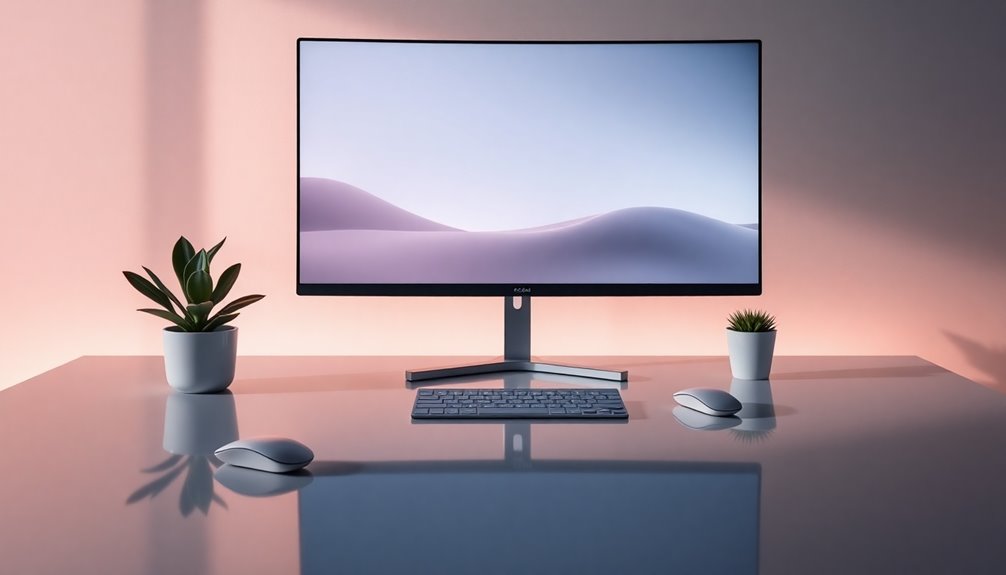
As you explore minimalist web design, incorporating AI can markedly enhance your experience by personalizing content to fit your preferences.
By leveraging AI-driven algorithms, you can achieve a tailored minimalist experience that prioritizes simplicity and clarity.
Here are three key ways AI can transform your web design:
- Personalized content recommendations based on user interaction patterns, making your website more engaging.
- Chatbots powered by AI provide real-time assistance, streamlining navigation while maintaining a clean aesthetic.
- Dynamic content adaptation allows layouts to adjust according to user preferences, ensuring an optimized experience.
These features not only enhance user experience but also reinforce minimalist principles, allowing you to create a more effective and enjoyable digital environment.
Sustainability in Minimalist Web Design
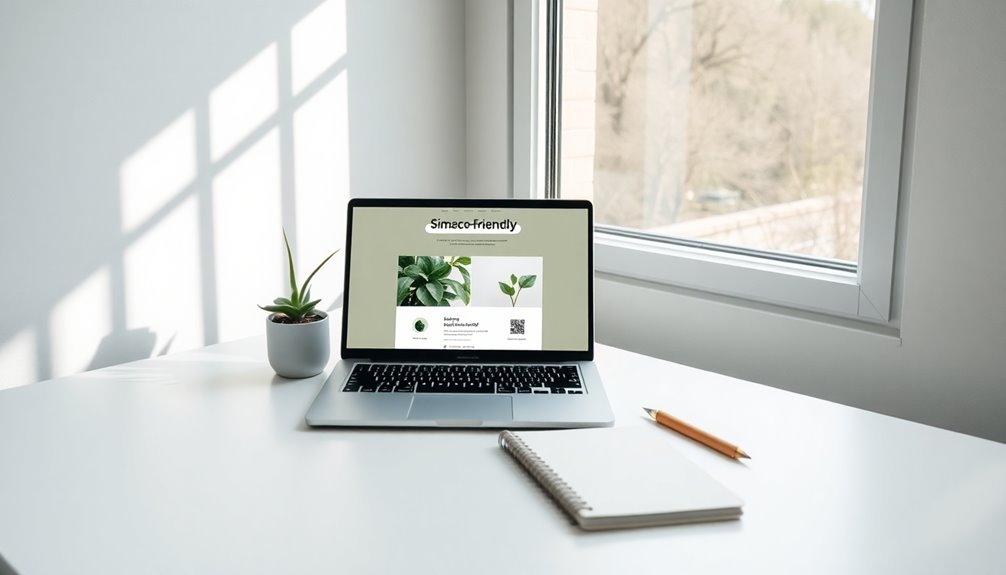
While many web designers focus on aesthetics and functionality, sustainability is becoming a crucial consideration in minimalist web design. By opting for energy-efficient hosting services, you can markedly lower the carbon footprint of your website.
Emphasizing minimalism in web design not only streamlines your aesthetic but also promotes reduced resource usage, making it easier to create eco-friendly sites. Implementing image optimization practices guarantees faster load times, which translates to lower energy consumption and a better user experience.
Plus, incorporating sustainable design elements attracts eco-conscious users who value environmental awareness. Many companies find that adopting these sustainable practices enhances their brand image and appeals to a growing demographic of environmentally conscious consumers, making it a win-win for everyone involved.
Trends in Typography for Minimalist Layouts
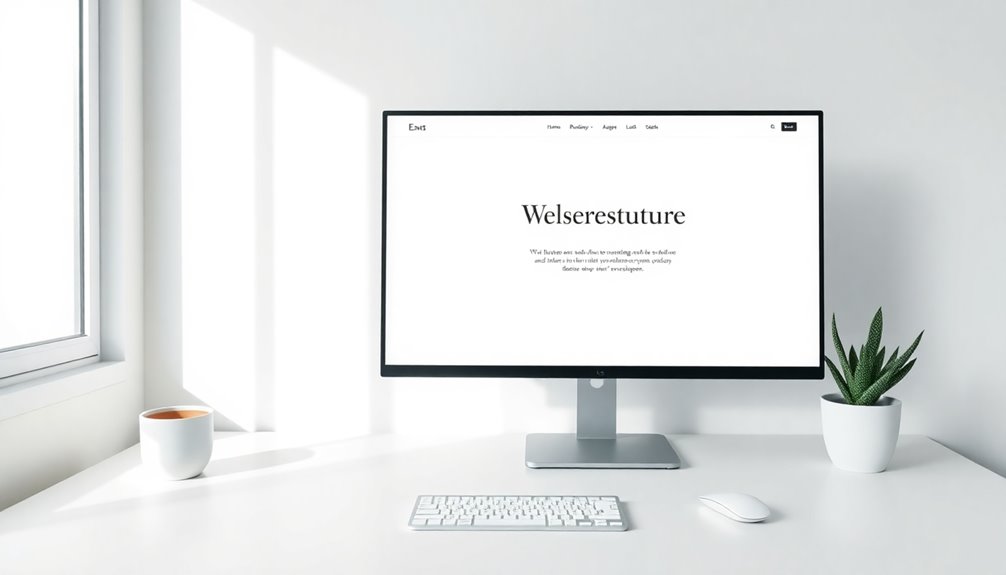
Five key trends in typography are shaping minimalist web design, making it more effective than ever. These trends enhance readability and user engagement within minimalist layouts:
- Bold Typography: Large, eye-catching fonts create visual impact while maintaining clarity.
- Sans-Serif Fonts: Clean lines of fonts like Arial and Helvetica boost modern appeal and readability.
- Content Hierarchy: Varying font sizes and weights guide users to important information, ensuring clarity.
Additionally, monochromatic color schemes paired with simplified typography create a cohesive look, while strategic use of white space enhances legibility and directs attention.
Successful Examples of Minimalist Web Design
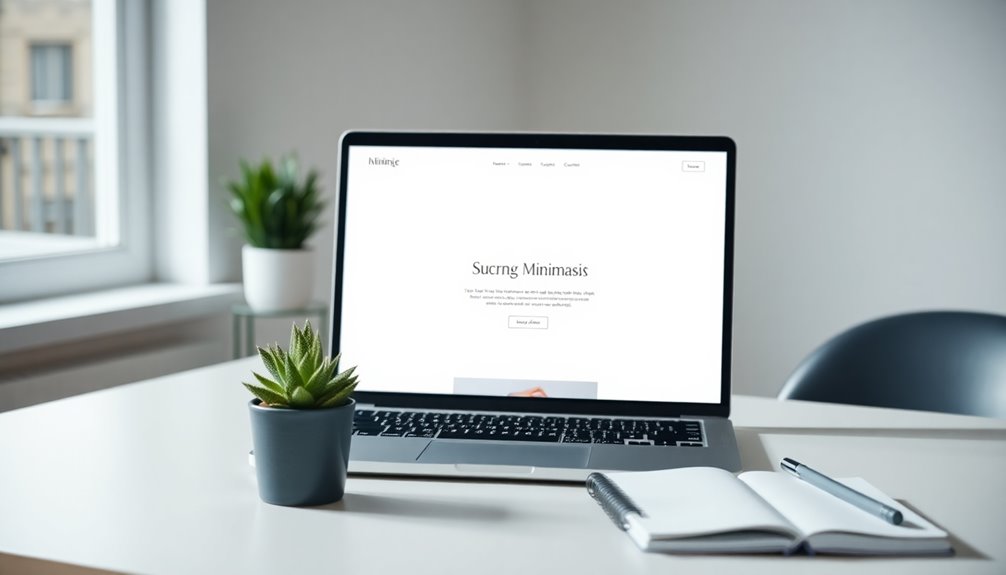
Minimalist web design isn't just a trend; it's a powerful approach that can enhance user experience across various industries. Successful examples abound, showcasing how simplicity can engage users effectively.
Minimalist web design is more than a trend; it's an effective strategy for enhancing user experience across diverse industries.
For instance, Apple and Dropbox use ample white space and clean typography, allowing users to focus on essential content.
Airbnb's minimalist navigation and high-quality imagery make exploring travel options straightforward.
E-commerce platform Everlane emphasizes transparency with its crisp product photography and straightforward layout.
Similarly, Blake Harris Law's clear headings and monochromatic scheme convey professionalism, while Pacific Clinics uses calm color schemes to build trust.
These examples demonstrate that minimalist web design isn't just visually appealing; it greatly improves the overall user experience.
Frequently Asked Questions
How Has Web Design Changed in Recent Years?
Web design's changed considerably in recent years, focusing more on user experience.
You'll notice faster loading times and improved navigation as designers reduce visual clutter. Bold typography and monochromatic color schemes enhance readability, while technology allows for engaging animations without sacrificing performance.
The rise of dark mode offers customizable experiences, and current trends show a shift towards vibrant colors and functional animations, blending simplicity with visual interest to keep users engaged.
What Is the Future of Web Design in 2024?
Imagine stepping into a serene garden, where every plant has purpose. In 2024, web design mirrors this tranquility, focusing on clean aesthetics and user comfort.
You'll notice bold typography and vibrant color accents that draw you in. Dark mode options make browsing easier, while subtle animations enhance interaction without overwhelming you.
As technology advances, expect a harmonious blend of minimalism and dynamic visuals, creating engaging and enjoyable online experiences tailored just for you.
What Makes a Great Minimalist Design?
A great minimalist design focuses on simplicity, allowing you to hone in on essential content.
You'll notice effective use of white space enhances readability and creates an inviting atmosphere.
Bold typography grabs your attention, while a limited color palette keeps things visually appealing and cohesive.
Functional graphics, like simple icons and buttons, support your navigation without adding clutter, ensuring every design element serves a clear purpose in your browsing experience.
What Is Latest in Web Designing?
Imagine flipping through a sleek magazine—this is what the latest in web design feels like.
You'll notice a surge in minimalist styles that prioritize simplicity and user experience. Bold typography and vibrant color accents catch your eye, while dark mode offers comfort for late-night browsing.
Micro-interactions add a layer of engagement, making your experience feel intuitive. Plus, AI helps tailor content just for you, keeping everything streamlined yet personalized.
Conclusion
In 2024, minimalist web design continues to thrive, blending simplicity with functionality. Did you know that 73% of users prefer a clean, uncluttered interface? This statistic highlights the importance of embracing minimalism for better user engagement. By focusing on key elements like color, typography, and micro-interactions, you can create a memorable experience that resonates with visitors. As you explore these trends, remember that less truly can be more in the digital landscape!
